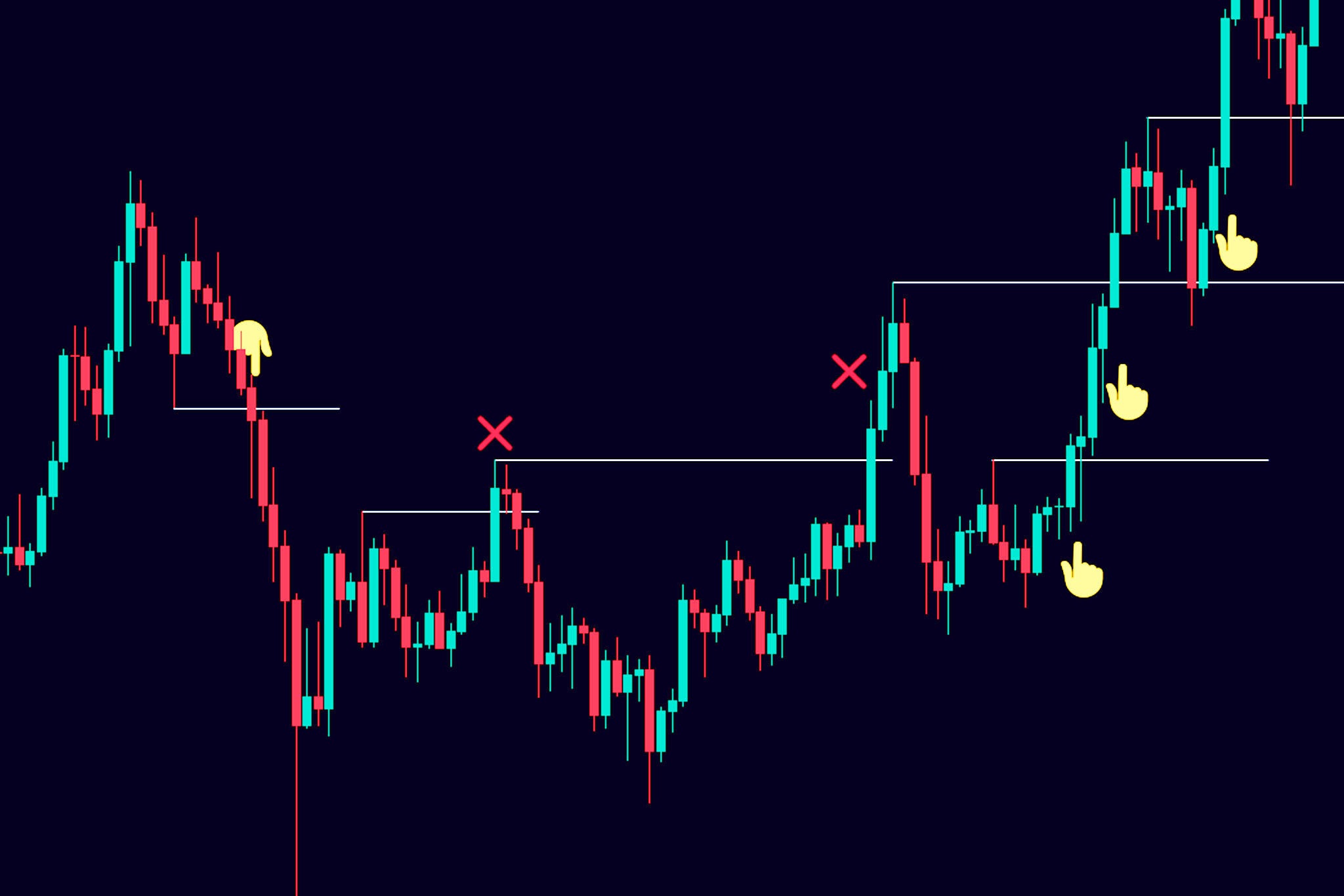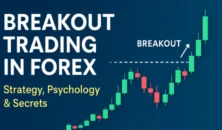- Why Breakout Trading Matters
- What Is a Breakout in Forex Trading?
- Why Use a Breakout Strategy?
- Types of Breakouts
- Step-by-Step: How to Trade a Breakout
- Tools and Indicators to Use
- Real Example: GBP/USD Breakout
- Common Mistakes to Avoid
- Summary: Is Breakout Trading Right for You?
- ❓ FAQ: Breakout Trading Strategy
- Next Steps: Ready to Try It?

Why Breakout Trading Matters
If you’re new to forex trading, you’ve likely heard the term “breakout” thrown around—but what does it really mean? More importantly, how can it help you make better trading decisions? In this beginner-friendly guide, I’ll walk you through everything you need to know about breakout trading, from the basics to advanced insights.
I’m Hassan Safari, a financial risk manager and CTO at a forex broker, with 7 years of trading and investing experience. I’ve helped hundreds of traders, just like you, understand and apply smart strategies—starting with this one.
What Is a Breakout in Forex Trading?
A breakout occurs when the price of a currency pair moves outside a defined support or resistance level with increased volume. It signals a potential shift in market sentiment and can lead to strong price movements, offering traders the chance to profit from volatility.
Breakouts usually occur:
- After periods of consolidation (sideways movement)
- During major news events or data releases
- At the opening of major trading sessions (London, New York)
Example:
Let’s say EUR/USD has been trading between 1.0900 (support) and 1.0950 (resistance) for several days. A breakout happens when the price moves above 1.0950 with strong momentum. This could indicate a bullish breakout and a potential buying opportunity.
Best Forex Trading Strategies for Start Trading
Why Use a Breakout Strategy?
Breakout strategies are powerful tools for identifying trading opportunities early in a trend. Here’s why beginners love it:
✅ Advantages:
- Early entry into new trends
- Clear entry and exit points
- High potential for strong price moves
- Easy to combine with indicators
❌ Disadvantages:
- False breakouts can occur
- Requires patience and discipline
- May need confirmation tools like volume or RSI

Types of Breakouts
Understanding the types of breakouts helps you decide how to act:
1. Continuation Breakouts
- The trend continues after a pause.
- Best for trend-following strategies.
2. Reversal Breakouts
- Breaks in the opposite direction of the current trend.
- Can signal a major trend change.
3. False Breakouts
- Price breaks a level but quickly returns.
- Often traps inexperienced traders.
Tip: Use confirmation signals like volume increase or candle patterns to filter false breakouts.
Step-by-Step: How to Trade a Breakout
Here’s a simple, step-by-step process you can follow:
1. Identify Key Levels
- Mark support and resistance zones using historical price data.
- Use a 1-hour or 4-hour chart for clarity.
2. Watch for Consolidation
- Look for price squeezing into a tight range.
- Common patterns: triangles, flags, or rectangles.
3. Set Alerts or Entry Orders
- Place pending orders just outside the consolidation range.
- Example: Buy stop at 1.0955 if resistance is 1.0950.
4. Confirm the Breakout
- Look for volume spike or strong candlestick close.
- Use indicators like RSI, MACD, or Bollinger Bands.
5. Manage Your Risk
- Set stop-loss just inside the range (e.g., below support).
- Use a risk-reward ratio of at least 1:2.
6. Trail Your Profits
- Adjust stop-loss as price moves in your favor.
- Lock in profits without exiting too early.

Tools and Indicators to Use
Here are beginner-friendly tools that work well with breakout strategies:
- Bollinger Bands – Detect volatility expansion
- Volume – Confirms breakout strength
- RSI – Spots overbought/oversold conditions
- Trendlines – Visualize breakout points
Real Example: GBP/USD Breakout
In March 2025, GBP/USD was trading sideways between 1.2650 and 1.2700. After UK inflation data exceeded forecasts, the price broke above 1.2700 and rallied to 1.2825 within two days.
Result: Traders who entered after the breakout captured over 120 pips in gains.
Common Mistakes to Avoid
- Jumping in too early without confirmation
- Ignoring volume or market context
- Using tight stop-losses that get hit too quickly
- Trading every breakout without filtering quality setups
Summary: Is Breakout Trading Right for You?
Breakout trading can be one of the most effective strategies for beginner forex traders, as long as you approach it with a plan and discipline.
Key Takeaways:
- A breakout is when price moves beyond support/resistance with momentum.
- It’s great for capturing new trends early.
- False breakouts are common—confirmation is essential.
- Use a clear, step-by-step plan to trade breakouts safely.
❓ FAQ: Breakout Trading Strategy
Great question—and one that trips up many beginners. A real breakout typically comes with:
A strong candlestick close beyond the level
A spike in trading volume
Support from momentum indicators like RSI or MACD
If the price breaks out but quickly returns to the range, it’s likely a false breakout. To avoid getting trapped, wait for confirmation before entering a trade.
There’s no one-size-fits-all answer, but here’s a general guide:
1-hour and 4-hour charts: Great for beginners—balanced between signals and noise.
Daily chart: More reliable breakouts, but fewer trades.
15-minute chart: Faster setups but higher risk of false breakouts.
Start with the 4-hour chart while you learn, then test others to see what fits your style.
Yes—but it’s riskier. While pure price action traders use clean charts, most beginners benefit from at least one or two indicators to confirm breakouts. For example:
Bollinger Bands to detect volatility expansion
Volume to validate strength
Trendlines for breakout zones
Using even minimal confirmation helps filter out low-quality setups.
A good rule for beginners is the 1–2% risk rule:
Never risk more than 2% of your total capital on a single trade.
Set your stop-loss just inside the range or behind a recent support/resistance level.
Pair this with a minimum 1:2 risk-to-reward ratio. That way, even if half your trades fail, you can still be profitable.
Breakout strategies work best on volatile, high-volume pairs, especially during active sessions. Some good choices:
EUR/USD – Consistent volume and news impact
GBP/USD – Strong moves after news
USD/JPY – Good for Tokyo session breakouts
GBP/JPY – High volatility (but riskier)
Stick to major pairs as a beginner—they’re more liquid and easier to read.
A breakout in trading happens when the price of a currency pair moves beyond a key support or resistance level—often with increased volume. This signals a potential shift in momentum and can lead to strong directional moves. Breakouts are used to catch new trends early, especially after the market has been trading in a tight range.
Imagine EUR/USD has been stuck between 1.0900 (support) and 1.0950 (resistance) for several days. Suddenly, after a U.S. economic report, price closes above 1.0950 with strong volume. You enter a buy trade, expecting further upward momentum. If the pair climbs to 1.1020, you’ve captured a successful breakout trade.
The best breakout pattern often depends on your trading style, but some of the most reliable ones include:
Ascending Triangle: Signals bullish breakouts
Descending Triangle: Signals bearish breakouts
Rectangle (Range): Breaks can go either way
Flag and Pennant: Continuation patterns with strong momentum
For beginners, ascending and descending triangles are easier to spot and often offer clean breakout opportunities.
The 9:30 breakout strategy is a method often used in stock or forex trading that targets breakouts shortly after the market opens—typically around 9:30 AM (New York time). Traders look for a setup where price breaks the high or low of the first 15–30 minutes of trading, indicating strong momentum for the day. It’s fast-paced and best suited for scalpers or day traders who thrive on early volatility.
Next Steps: Ready to Try It?
If you’re ready to apply what you’ve learned:
- Practice spotting breakouts on a demo account.
- Use proper risk management at all times.
- Track your results and learn from each trade.
Want more beginner strategies? Subscribe for more guides or share this with a fellow trader who’s just getting started!







